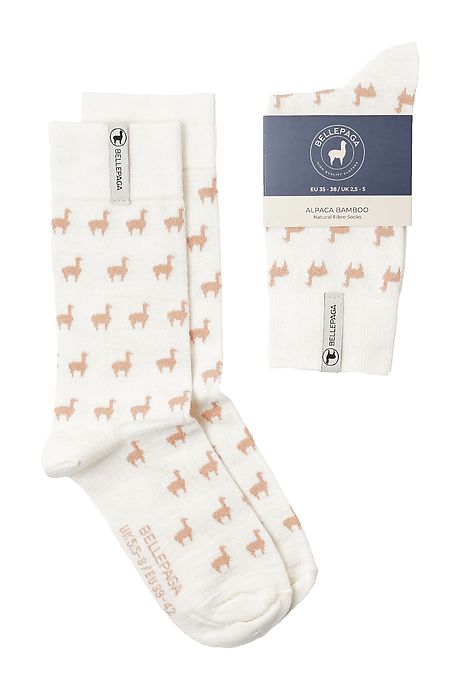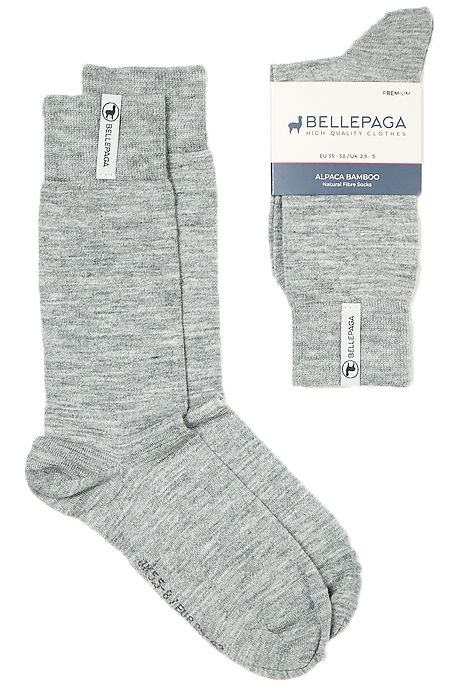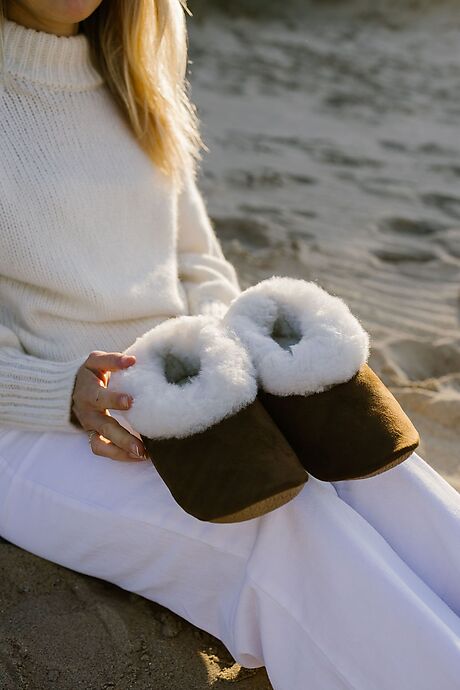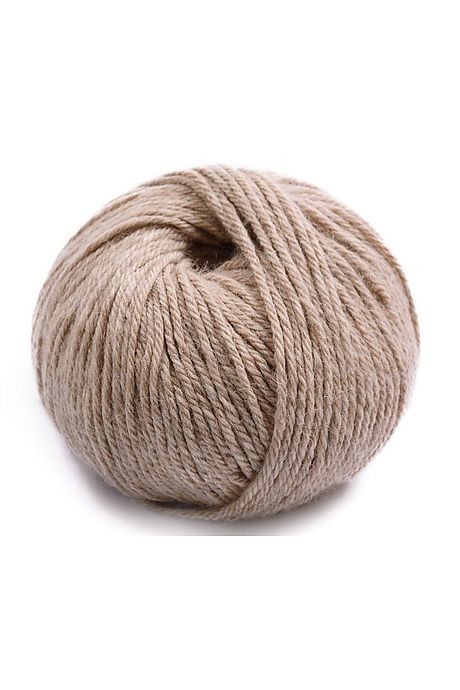Alpaca wool

To fully understand what wool is, let's start with a little history. The word "wool" is commonly used to refer to the fibers produced by different breeds of sheep. It is also used to refer to fibers produced by other animal species, but a qualifier is then added to distinguish them:.png) - Alpaca wool, the fleece of the alpaca...
- Alpaca wool, the fleece of the alpaca...
- mohair wool, fleece of the angora goat
- cashmere wool, cashmere goat fleece
- angora wool, fleece of the angora rabbit.
In the table below, you will find a rough classification of the world's finest fibers.
They are measured in microns; 1 micron = 1/1000 millimetres.
|
Species |
Average fiber diameter, in microns : |
|
Vigogne |
10 to 12 microns; |
|
Merinos |
12 to 22 microns; |
|
Cashmere goat |
15 to 19 microns; |
|
Alpaca |
12 to 30 microns; |
|
Guanaco |
18 to 24 microns; |
|
Camel |
18 to 26 microns; |
|
Angora goat |
20 to 30 microns (the angora goat produces the mohair fibre) |
|
Lama |
20 to 40 microns; |
Among the different types of Alpaca fiber, BellePaga has chosen to highlight the Baby Alpaca fiber, which is finer, softer and silkier.
Alpaca wool comes from the annual shearing of the alpaca. We obtain a fibre between only 12 and 32 microns. It is the most prestigious natural fiber in the world because it has many unique virtues.

Alpaca wool: properties
Alpaca wool stands out with its insulating power which are 7 times higher than that of sheep wool, and its unequalled softness which is close to cashmere wool. This wool therefore protects you much better from the cold, with softness, without ever making you sweat thanks to its thermo-regulating properties.It is also incredibly light, pleasant to wear, and respects even the most sensitive skins. These are some of the reasons why NASA equipped its astronauts with clothing in this wool at the beginning of the conquest of space.
It is an ideal wool to wear in winter, mid-season, or to go hiking, winter sports, ...
Alpaca wool has a high resistance, and hardly pills. This allows you to extend the life of your clothes and accessories. You will be able to keep them in good condition much longer.
Alpaca wool sweaters
All the items on our online shop will allow you to take advantage of these benefits!
Alpaca Wool, the Animal
 The Alpaca is the animal that undergoes the greatest temperature variations, ranging from -25 to 30 °C in a single day. To adapt to this, it has developed a natural fiber with exceptional thermoregulatory properties.
The Alpaca is the animal that undergoes the greatest temperature variations, ranging from -25 to 30 °C in a single day. To adapt to this, it has developed a natural fiber with exceptional thermoregulatory properties.
Thus, this fibre lets the moisture of your skin evacuate very well, unlike sheep's wool for example.
Alpaca wool allows you to make sure you are always warm, without ever sweating.
Alpaca wool is extremely resistant unlike other notable wools such as cashmere.
You avoid seeing your belongings warping, wearing out with rubbing and cleaning, or pilling.
It is 4 times more resistant than sheep's wool.
You will keep your belongings much longer.
Alpaca wool is the only wool that doesn't give off any smell when wet!
Alpaca is the animal that makes the widest variety of natural colours for its wool.
There are more than 200 listed in the world, and 22 that are officially listed.
This great diversity of colours ranges from off-white to dark brown, thus avoiding artificial dyes.
Unlike all other wools, Alpaca wool does not contain lanolin. Lanolin is the allergenic substance to which a large number of people to be sensitive.
It therefore allows you to take full advantage of its benefits without any fear.
Ideal, it also respects baby's skin very well.
Alpaca is a hollow fibre between only 12 and 32 microns. This allows it to be much lighter and more comfortable to wear.
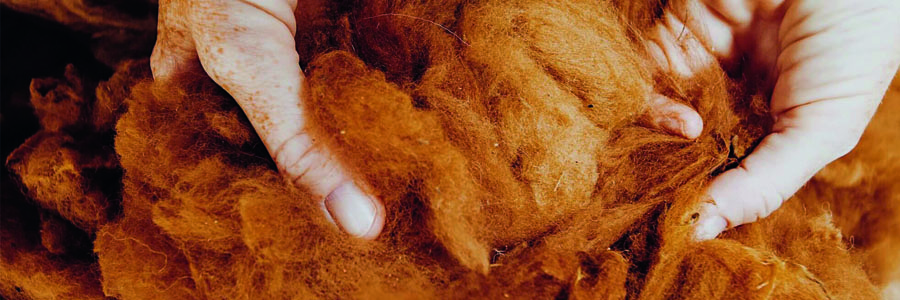 Moreover, it's important thermal insulating power, allows you to wear light and pleasant clothes while protecting you perfectly from the cold.
Moreover, it's important thermal insulating power, allows you to wear light and pleasant clothes while protecting you perfectly from the cold.
Alpaca is a very elastic fibre which allows our clothes and accessories to be particularly comfortable by perfectly matching the shape of your body.
Alpaca wool is the only wool that does not pill, even after several washes. This saves you the frustration of seeing your clothes lose their original appearance very quickly.
You will keep your clothes in perfect condition much longer.
Contrary to the vast majority of synthetic fibres and a part of natural fibres, Alpaca wool is a material that does not catch fire very easily (only in case of direct and prolonged contact with fire) and will therefore protect you much better if you are subjected to extreme heat (cigarette ash, camp fire, ...).
Alpaca is an animal that emits very few greenhouse gases. Moreover, to feed itself, it does not uproot the different plants (unlike the goat). The vegetation can then grow back and feed them again. It thus has a very low impact on ecology.
Finally, its wool does not require any treatment or chemical dyes, which preserves the environment.
Alpaca, Baby Alpaca & Royal Alpaca

Alpacas are sheared once a year. The first shearing will produce between 1.5 and 2 kg of "Baby Alpaca" fibre, while the subsequent shearing will produce up to 3 kg of "Alpaca" fibre.
Alpaca fibre is classified according to its diameter: Alpaca, Baby Alpaca and Royal Alpaca.
The diameter of "Alpaca" fibre is 23.1 - 26.5 microns, that of "Baby Alpaca" is about 14 - 23 microns while that of "Royal Alpaca" results from the selection of the best and finest Baby Alpaca fibres whose diameter can go down to 12 microns.
By way of comparison, the diameter of a human hair is around 60 microns.
The Alpacas that produce this fibre, evolve in complete freedom, raised in their natural habitat where they can feed in complete peace of mind.
Contact us for any additional information, we will be happy to answer your questions!
Don't hesitate to also consult our Men's, Women's and Home & Decoration collections to discover all our Alpaca wool products!
-
Shawl Jaway
119,00 €
-
Yupa Socks - Classic
- 35 - 38
- 39 - 42
- 43 - 46
23,90 €
-
Sami Premium Socks - Classic
- 35 - 38
- 39 - 42
- 43 - 46
29,90 €
-
La Paz Slippers
- 35
- 36
- 37
- 38
- 39
- 40
- 41
- 42
- 43
- 44
- 45
- 34
- 46
- 47
69,00 €
-
Alpaca Yarn
9,90 €



